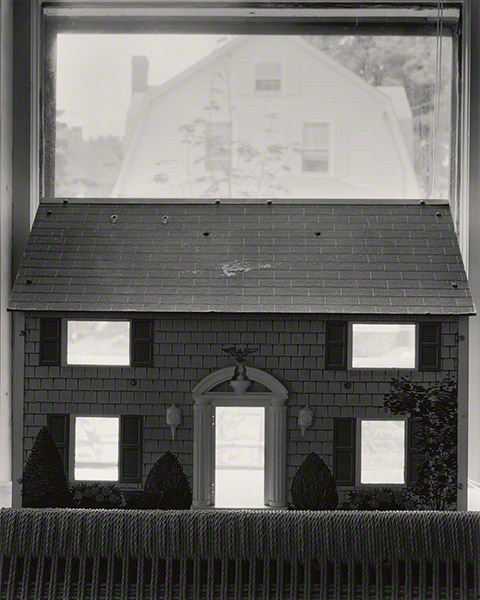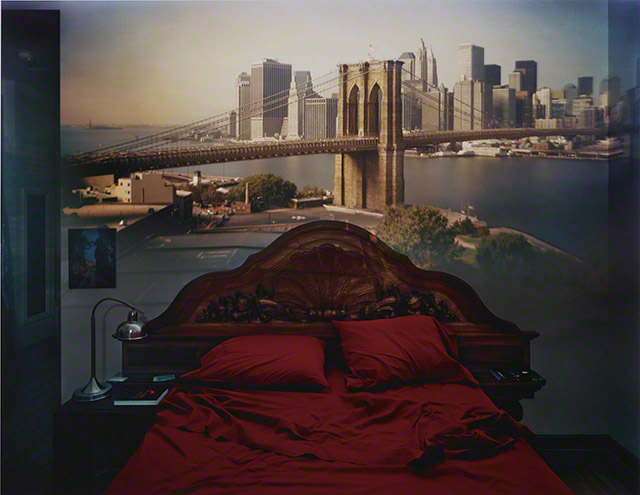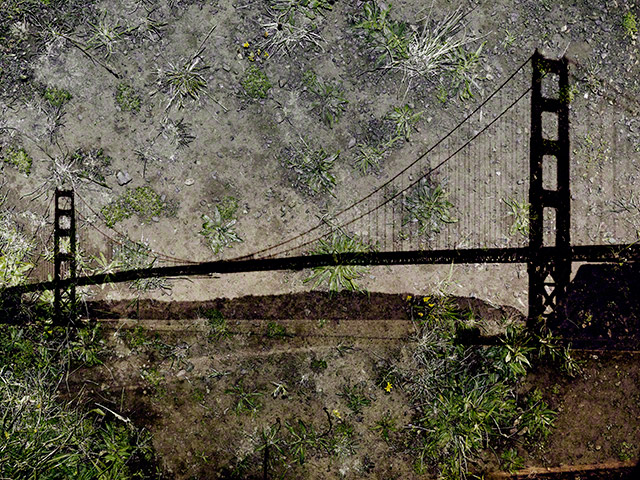A Trajectory of Creativity and Curiosity
Morell's early photographic models were Henri Cartier-Bresson, Robert Frank, Garry Winogrand, and Diane Arbus, who all prowled the streets with handheld cameras. In 1986, his work underwent a radical shift as his personal circumstances changed and he and his wife started a family. The following themes exemplify images made since then that mine the essential strangeness and complexity of photography.
From a Child's Perspective
After his first child was born in 1986, Morell found novel subject matter in the domestic interior and began to use a large-format view camera. "I started making photographs as if I were a child myself," he later wrote. "This strategy got me to look at things around me more closely, more slowly, and from vantage points I hadn't considered before."

Loading the video
Camera Obscura Images in Black and White
Morell began his camera obscura series in 1991. Transforming entire rooms into cameras by covering the windows and inserting a small hole, he photographed the outside world as projected onto various interiors. He started by making black-and-white pictures in his own home before traveling in search of other sites for his uncanny, disorienting images.

Loading the video
Camera Obscura Images in Color
In 2005 Morell turned to producing camera obscura works in color and eventually incorporated technical refinements. He began to employ a diopter lens, an optical tool that significantly reduces exposure time and increases the brightness and sharpness of the image. For some pictures, he used a prism to change the orientation of his projections from upside down to right side up.

Loading the video
Everyday Objects
Long interested in what he calls "symbolic paper"— things like maps, money, and books—Morell became keenly attentive to their material qualities. He is also fascinated with photographing everyday objects; experimenting with ways to light them or set them in motion in order to usurp our familiarity with them.

Loading the video
Tent Camera Images
Morell set out, in 2010, to capture the grandeur of the American West. He began experimenting with a portable tent camera with a periscope lens on top, which projected the scene outside onto the ground within the structure. He found it appealing that what was overlooked because it was underfoot formed the backdrop for these images. 
Loading the video
Art Museums
At the invitation of various museums, Morell has created photographs that involve unexpected juxtapositions and explore how the presentation of art affects meaning. In 2010 he switched from film to digital photography. This not only shortened the duration of exposure required to make a picture, but also allowed him greater precision in portraying ephemeral light effects. 
Loading the video

